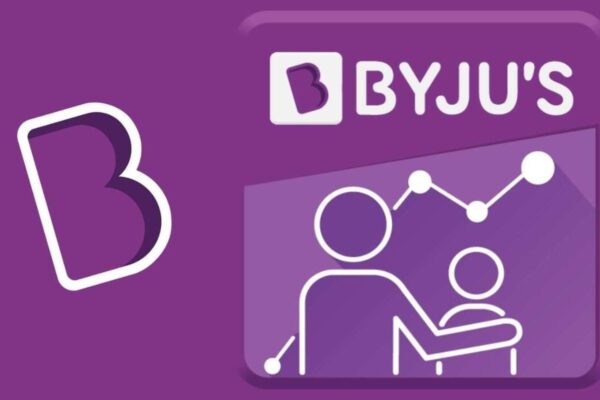Byju’s Raveendran confers problems of Six months. What were the issues which Byju’s faced?

Byju’s Raveendran confers problems over the prior six months, saying that “if this didn’t shatter us, nothing will.”
Byju’s has been the centre of debates over late financial filings, aggressive sales tactics, layoffs, and funding issues. The most valuable startup in India had a rough year. Byjus, the earlier face of the tech industry, has come under fire on several fronts.
Questions about its aggressive sales tactics have come up again; its annual report for FY21 was filed a year late, there were a lot of layoffs, and its fundraising engine was said to be failing, all of which alarmed stakeholders.
“The past six months have been incredibly challenging and demeaning… This is the toughest it can get. The $23 billion business creator, Byju’s Raveendran, told in a Zoom interview that if this doesn’t break us, nothing else will.
The former teacher-turned-businessman kept a constant smile on while quickly dispelling concerns about the company’s accounting systems, funding issues, and sales equipment. He said displeasure with how the company’s moves were perceived.
Byju’s has forecast a 14% decline in revenue to $327 million in FY21. It pleaded that due to a change in accounting processes, a sizable part of the growth in its business was not reflected in the revenue formation, and about 40% of the revenue was delayed to succeeding years.
Despite everything that has been published about the company, no investor has sold any shares in the last six months. This proves that they have been operating properly, stated Raveendran in the interview.
How Byju’s has been dealing with so many questions from all directions?

Really trying and depressing has been the past six months. There is an eternal optimist, though, and it’s been a great learning option. This is the toughest it can get. And if this can break us, nothing else will, said Raveendran.
What lessons have they learned so far?
All parties—auditors, investors, lenders, and the media—have contributed to the learning. They’ll mention ten of the misconceptions that have been made about them.
Fraud has never happened. Auditors have never said a desire to leave their positions. They have already started to revamp the financial function after learning this lesson the hard way. But since that is a private corporation, it’s near as if they are moving from one extreme to the other. Even publicly traded corporations do not undergo this amount of study.
Given the delay in submitting the FY21 financials, are they employing a chief financial officer?
The finance department is being strengthened, and part of that process includes hiring a global CFO. Additionally, they are well-equipped for the future. They used to work as a single-market, single-product company, but also now work as a multi-product, multi-geography firm.
Why was it so difficult to submit the FY21 results?
Three explanations were given. First off, Covid made it more difficult to travel and audit assistants. Then there were multiple acquisitions, which resulted in increased complexity. The third reason was a change to our revenue recognition process. Because of this, there will be no growth between FY20 and FY21 in the audited financials.
However, it has been even noticed that revenues are postponed to later years. This was partially caused by supply uncertainties that happened when Covid first launched, hence they provided streaming access to customers. Credit-based purchases were another aspect of the shift in revenue recognition because the EMI (equated monthly instalment) payments will be made over time.
When will their FY22 financials be submitted?

On that, they are still debating. Lenders and investors are unconcerned. Investors aren’t concerned with FY21’s financials, but they were worried because of the media narrative when people started accusing us of fraud and other things. It is absurd. Investors are now quite relieved and comfortable.
Objectively speaking, not a single investor has sold their shares in the past six months, despite the truth that some of them are sitting on gains of 50X or 100X. That is a clear sign that investors believe we will succeed.
According to what you meant, FY22 revenues would be close to Rs 10,000 crore. In the new recognition system, are those revenues audited? Will that be a fair comparison if not?
It is not audited, no. The auditors were told that figure. In FY21, the delta as a result of the recognition change was 40%. Because of Covid, EMI sales at that time period were substantially higher. Whatever the audit figure for FY22 is, there will be a significant increase over FY21, I can guarantee.
Losses, what losses does Byjus face?
They lost almost Rs 4,500 crore in fiscal year 21. This was due to the postponement of income, some of the fast-growing but loss-making acquisitions we made, marketing and sales expenses, taxes, and other direct costs.
How well have the businesses they bought performed?
Aakash, which cost $1 billion, and Great Learning, which cost $600 million, were the two largest acquisitions, and both have performed well. Within 12–15 months, they both surpassed expectations and grew 2X larger. Cost-wise, WhiteHat Junior has presented a challenge. There only business problem is reducing the cost of customer acquisition.
How much of the estimated Rs 10,000 crore in revenue for FY22 would come from acquisitions as opposed to organic growth?
There primary K-12 business in India accounts for about two-thirds of that revenue. The financials for FY22 will include revenue from Aakash. The majority of the other purchases, including Great Learning and Epic, will be included in the following year.
Moreover, several of Sumeru Ventures and Oxshott’s investments are still to come. There have been rumours that Blackstone wasn’t paid in full for the Aakash acquisition. Additionally, it was claimed that funding for the purchase of 2U could not be arranged.
Is there a shortage of cash?

After receiving a $2.4 billion finance commitment from one of the biggest banks, they made an acquisition offer for 2U. They are unable to make any offers because the company is publicly traded before the financing is set up. The agreement was not won by them. However, 2U is still not in wide distribution. It’s still accessible.
Based on regulatory requirements, the Blackstone payment is something that the two of them have decided upon. When people claim that they are running out of money, it is a farce.
Now, it’s true that Sumeru and Oxshott won’t be providing the $300 million, but that is not their fault. But what does $300 million matter? In one week, they can raise $300 million.
Are sovereign wealth funds involved in your latest $500 million round of fundraising?
They didn’t approach any investors in the past six months. Only in the past several weeks have begun contacting investors. It’s not like they’re trying to rob $500 million. They are constantly looking for like-minded investors so that they can acquire like-minded businesses. When cash was needed, they never raised it. So they won’t be able to raise money on your terms if you do that.
Because we don’t raise money when we need it, we haven’t given liquidation preference and have raised money for common shares thus far.
How much financial breathing room do they have?
They don’t need a lot of money if we don’t buy businesses. The majority of our main companies are already profitable or breaking even. WhiteHat Junior is the only place they are losing money. In 600 centres, they are making new investments that would cost Rs 1,000 crore. That is an expenditure. The issue of the runway is not brought up.
Another impression is that they switched from being a teacher to a dealmaker with a laser-like emphasis on valuation.
Will Byju’s continue to be a valuation-focused engine? Do they still think the $23 billion valuation is reasonable?
The valuation of $23 billion is not based on FY21. Based on the value for FY23. It always uses the forward multiple as a foundation. They raised between $6 and $7 billion in FY21. They only raised $22 billion because raising capital is focused on forwarding multiples.
Even now, 90% of my time is spent doing other things than fundraising. It’s simple to raise money. It doesn’t take long to achieve it. When you are constructing a firm with the intention of making it last for decades, raising money is the easiest task to complete.
They don’t need to raise so much money considering the current situation. They are not going to the general market; instead, they are seeking money from a very small number of carefully chosen investors. They will approach some of the current sovereign investors, so that part is simple. To put it mildly, they don’t accept the media’s story. They wouldn’t be alive today if people believed what they were told by the media.
Despite all the commotion, not a single one of the 71 headline investors from whom they obtained capital has sold in the past six months.
Because they are sitting on a 50x 100x return, many won’t sell. In the last six months, there hasn’t been a single top-level departure. And I’m claiming that if people stay with us during these trying times, they won’t ever leave. 10,000 new instructors will be hired over the following 18 months, as well.
What steps will Byju’s company listing ambitions take next? Will you be travelling more to integrate your operations and purchases abroad?
Even now, 75% of our companies are situated in India. Another misleading media narrative holds that because the Indian market is saturated, Byju’s is now concentrating on the US market.
New initiatives and markets now require beginning work in the strategy phase. They receive unjustified praise for all of our accomplishments and unjustified criticism for our mistakes, but that’s fine, no complaints.
They participate wherever it is needed, but the past six months have been difficult; and feel like they have slept very little. However, there is a part of me that relishes the difficulties. Because it’s a lot of fun to disprove everyone, and because they come from a place where they can survive anything, they often promise to do so.
How much of your income comes from selling tablets as opposed to selling actual courses?
Less than 15% of our expenses go toward it. Their financial records used to incorrectly reflect sales of SD cards and tablets from our auditors. This year, they converted it to the selling of educational technology products. The cost of tablets makes up less than 5% of our entire revenue. It is a part of our direct costs. Other than the charges associated with the SD card and the payment, they have no other direct costs.
Additionally, their decision to securitize your trade receivables has drawn criticism.
Every premier business does that. It is a finance marvel if done properly. The fact that people are prepared to value your receivables and to lend money against them at low-interest rates demonstrates the trust that the financing partners have in one another. Companies are unquestionably sound businesses if they can securitize their assets. But that’s not because money is much needed. It is among the least expensive types of debt. Over the past three years, they have securitized about Rs 1,000 crore in total.
edited and proofread by nikita sharma




